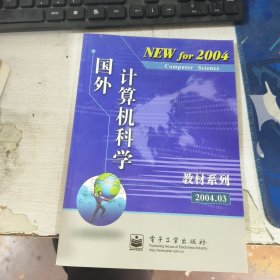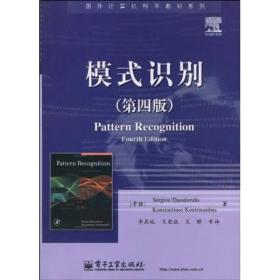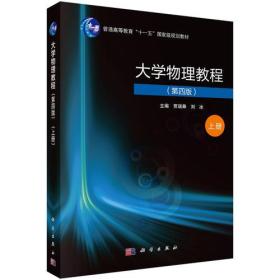
国外计算机科学教材系列:计算机安全·原理与实践(第2版)(英文版)
正版二手,无赠品、光盘、MP3等。批量上传数据有误差,默认发一本,套装书需联系客服核实,还请见谅!
¥ 21.88 2.2折 ¥ 99 八五品
库存55件
作者[美]William、[美]Lawrie Brown 著
出版社电子工业出版社
出版时间2013-04
版次2
装帧平装
货号9787121200342
上书时间2024-12-19
- 最新上架
商品详情
- 品相描述:八五品
图书标准信息
- 作者 [美]William、[美]Lawrie Brown 著
- 出版社 电子工业出版社
- 出版时间 2013-04
- 版次 2
- ISBN 9787121200342
- 定价 99.00元
- 装帧 平装
- 开本 16开
- 纸张 胶版纸
- 页数 812页
- 字数 1520千字
- 正文语种 英语
- 【内容简介】
- 《国外计算机科学教材系列:计算机安全·原理与实践(第2版)(英文版)》在上一版的基础上进行了修订与更新,全面覆盖了计算机安全领域的相关主题。全书共分为五个部分:第一部分——计算机安全技术与原理,概述了支持有效安全策略所必需的技术领域;第二部分——软件安全与可信系统,讲解了软件开发和运行中的安全问题;第三部分——管理问题,主要讨论信息与计算机安全在管理方面的问题;第四部分——密码学算法,给出了各种类型的加密算法和其他类型的密码算法;第五部分——网络安全,重点分析了为网络通信提供安全保障的协议和标准。《国外计算机科学教材系列:计算机安全·原理与实践(第2版)(英文版)》思路清晰、结构严谨,并且提供了大量精心设计的实践问题。
- 【作者简介】
- WilliamStallings,拥有美国麻省理工学院计算机科学博士学位,现任教于澳大利亚新南威尔士大学国防学院(堪培拉)信息技术与电子工程系。他是世界知名计算机学者和畅销教材作者,已经撰写了17部著作,出版了40多本书籍,内容涉及计算机安全、计算机网络和计算机体系结构等方面,堪称计算机界的全才。他曾九次荣获美国“教材和学术专著作者协会”颁发的“年度最佳计算机科学教材”奖。
- 【目录】
-
Chapter0Reader'sandInstructor'sGuide
0.1OutlineofThisBook
0.2ARoadmapforReadersandInstructors
0.3SupportforCISSPCertification
0.4InternetandWebResources
0.5Standards
Chapter1Overview
1.1ComputerSecurityConcepts
1.2Threats,Attacks,andAssets
1.3SecurityFunctionalRequirements
1.4ASecurityArchitectureforOpenSystems
1.5ComputerSecurityTrends
1.6ComputerSecurityStrategy
1.7RecommendedReadingandWebSites
1.8KeyTerms,ReviewQuestions,andProblems
PARTONE:COMPUTERSECURITYTECHNOLOGYANDPRINCIPLES
Chapter2CryptographicTools
2.1ConfidentialitywithSymmetricEncryption
2.2MessageAuthenticationandHashFunctions
2.3Public-KeyEncryption
2.4DigitalSignaturesandKeyManagement
2.5RandomandPseudorandomNumbers
2.6PracticalApplication:EncryptionofStoredData
2.7RecommendedReadingandWebSites
2.8KeyTerms,ReviewQuestions,andProblems
Chapter3UserAuthentication
3.1MeansofAuthentication
3.2Password-BasedAuthentication
3.3Token-BasedAuthentication
3.4BiometricAuthentication
3.5RemoteUserAuthentication
3.6SecurityIssuesforUserAuthentication
3.7PracticalApplication:AnIrisBiometricSystem
3.8CaseStudy:SecurityProblemsforATMSystems
3.9RecommendedReadingandWebSites
3.10KeyTerms,ReviewQuestions,andProblems
Chapter4AccessControl
4.1AccessControlPrinciples
4.2Subjects,Objects,andAccessRights
4.3DiscretionaryAccessControl
4.4Example:UNIXFileAccessControl
4.5Role-BasedAccessControl
4.6CaseStudy:RBACSystemforaBank
4.7RecommendedReadingandWebSite
4.8KeyTerms,ReviewQuestions,andProblems
Chapter5DatabaseSecurity
5.1TheNeedforDatabaseSecurity
5.2DatabaseManagementSystems
5.3RelationalDatabases
5.4DatabaseAccessControl
5.5Inference
5.6StatisticalDatabases
5.7DatabaseEncryption
5.8CloudSecurity
5.9RecommendedReadingandWebSite
5.10KeyTerms,ReviewQuestions,andProblems
Chapter6MaliciousSoftware
6.1TypesofMaliciousSoftware(Malware)
6.2Propagation-InfectedContent-Viruses
6.3Propagation-VulnerabilityExploit-Worms
6.4Propagation-SocialEngineering-SPAME-mail,Trojans
6.5Payload-SystemCorruption
6.6Payload-AttackAgent-Zombie,Bots
6.7Payload-InformationTheft-Keyloggers,Phishing,Spyware
6.8Payload-Stealthing-Backdoors,Rootkits
6.9Countermeasures
6.10RecommendedReadingandWebSites
6.11KeyTerms,ReviewQuestions,andProblems
Chapter7Denial-of-ServiceAttacks
7.1Denial-of-ServiceAttacks
7.2FloodingAttacks
7.3DistributedDenial-of-ServiceAttacks
7.4Application-BasedBandwidthAttacks
7.5ReflectorandAmplifierAttacks
7.6DefensesAgainstDenial-of-ServiceAttacks
7.7RespondingtoaDenial-of-ServiceAttack
7.8RecommendedReadingandWebSites
7.9KeyTerms,ReviewQuestions,andProblems
Chapter8IntrusionDetection
8.1Intruders
8.2IntrusionDetection
8.3Host-BasedIntrusionDetection
8.4DistributedHost-BasedIntrusionDetection
8.5Network-BasedIntrusionDetection
8.6DistributedAdaptiveIntrusionDetection
8.7IntrusionDetectionExchangeFormat
8.8Honeypots
8.9ExampleSystem:Snort
8.10RecommendedReadingandWebSites
8.11KeyTerms,ReviewQuestions,andProblems
Chapter9FirewallsandIntrusionPreventionSystems
9.1TheNeedforFirewalls
9.2FirewallCharacteristics
9.3TypesofFirewalls
9.4FirewallBasing
9.5FirewallLocationandConfigurations
9.6IntrusionPreventionSystems
9.7Example:UnifiedThreatManagementProducts
9.8RecommendedReadingandWebSite
9.9KeyTerms,ReviewQuestions,andProblems
PARTTWO:SOFTWARESECURITYANDTRUSTEDSYSTEMS
Chapter10BufferOverflow
10.1StackOverflows
10.2DefendingAgainstBufferOverflows
10.3OtherFormsofOverflowAttacks
10.4RecommendedReadingandWebSites
10.5KeyTerms,ReviewQuestions,andProblems
Chapter11SoftwareSecurity
11.1SoftwareSecurityIssues
11.2HandlingProgramInput
11.3WritingSafeProgramCode
11.4InteractingwiththeOperatingSystemandOtherPrograms
11.5HandlingProgramOutput
11.6RecommendedReadingandWebSites
11.7KeyTerms,ReviewQuestions,andProblems
Chapter12OperatingSystemSecurity
12.1IntroductiontoOperatingSystemSecurity
12.2SystemSecurityPlanning
12.3OperatingSystemsHardening
12.4ApplicationSecurity
12.5SecurityMaintenance
12.6Linux/UnixSecurity
12.7WindowsSecurity
12.8VirtualizationSecurity
12.9RecommendedReadingandWebSites
12.10KeyTerms,ReviewQuestions,andProblems
Chapter13TrustedComputingandMultilevelSecurity
13.1TheBell-LaPadulaModelforComputerSecurity
13.2OtherFormalModelsforComputerSecurity
13.3TheConceptofTrustedSystems
13.4ApplicationofMultilevelSecurity
13.5TrustedComputingandtheTrustedPlatformModule
13.6CommonCriteriaforInformationTechnologySecurityEvaluation
13.7AssuranceandEvaluation
13.8RecommendedReadingandWebSites
13.9KeyTerms,ReviewQuestions,andProblems
PARTTHREE:MANAGEMENTISSUES
Chapter14ITSecurityManagementandRiskAssessment
14.1ITSecurityManagement
14.2OrganizationalContextandSecurityPolicy
14.3SecurityRiskAssessment
14.4DetailedSecurityRiskAnalysis
14.5CaseStudy:SilverStarMines
14.6RecommendedReadingandWebSites
14.7KeyTerms,ReviewQuestions,andProblems
Chapter15ITSecurityControls,Plans,andProcedures
15.1ITSecurityManagementImplementation
15.2SecurityControlsorSafeguards
15.3ITSecurityPlan
15.4ImplementationofControls
15.5ImplementationFollow-up
15.6CaseStudy:SilverStarMines
15.7RecommendedReading
15.8KeyTerms,ReviewQuestions,andProblems
Chapter16PhysicalandInfrastructureSecurity
16.1Overview
16.2PhysicalSecurityThreats
16.3PhysicalSecurityPreventionandMitigationMeasures
16.4RecoveryfromPhysicalSecurityBreaches
16.5Example:ACorporatePhysicalSecurityPolicy
16.6IntegrationofPhysicalandLogicalSecurity
16.7RecommendedReadingandWebSites
16.8KeyTerms,ReviewQuestions,andProblems
Chapter17HumanResourcesSecurity
17.1SecurityAwareness,Training,andEducation
17.2EmploymentPracticesandPolicies
17.4ComputerSecurityIncidentResponseTeams
17.5RecommendedReadingandWebSites
17.6KeyTerms,ReviewQuestions,andProblems
Chapter18SecurityAuditing
18.1SecurityAuditingArchitecture
18.2TheSecurityAuditTrail
18.3ImplementingtheLoggingFunction
18.4AuditTrailAnalysis
18.5Example:AnIntegratedApproach
18.6RecommendedReadingandWebSite
18.7KeyTerms,ReviewQuestions,andProblems
Chapter19LegalandEthicalAspects
19.1CybercrimeandComputerCrime
19.2IntellectualProperty
19.3Privacy
19.4EthicalIssues
19.5RecommendedReadingandWebSites
19.6KeyTerms,ReviewQuestions,andProblems
PARTFOURCRYPTOGRAPHICALGORITHMS
Chapter20SymmetricEncryptionandMessageConfidentiality
20.1SymmetricEncryptionPrinciples
20.2DataEncryptionStandard
20.3AdvancedEncryptionStandard
20.4StreamCiphersandRC
20.5CipherBlockModesofOperation
20.6LocationofSymmetricEncryptionDevices
20.7KeyDistribution
20.8RecommendedReadingandWebSites
20.9KeyTerms,ReviewQuestions,andProblems
Chapter21Public-KeyCryptographyandMessageAuthentication
21.1SecureHashFunctions
21.2HMAC
21.3TheRSAPublic-KeyEncryptionAlgorithm
21.4Diffie-HellmanandOtherAsymmetricAlgorithms
21.5RecommendedReadingandWebSites
21.6KeyTerms,ReviewQuestions,andProblems
PARTFIVENETWORKSECURITY
Chapter22InternetSecurityProtocolsandStandards
22.1SecureE-mailandS/MIME
22.2DomainKeysIdentifiedMail
22.3SecureSocketsLayer(SSL)andTransportLayerSecurity(TLS)
22.4HTTPS
22.5IPv4andIPv6Security
22.6RecommendedReadingandWebSites
22.7KeyTerms,ReviewQuestions,andProblems
Chapter23InternetAuthenticationApplications
23.1Kerberos
23.2X.
23.3Public-KeyInfrastructure
23.4FederatedIdentityManagement
23.5RecommendedReadingandWebSites
23.6KeyTerms,ReviewQuestions,andProblems
Chapter24WirelessNetworkSecurity
24.1WirelessSecurityOverview
24.2IEEE802.11WirelessLANOverview
24.3IEEE802.11iWirelessLANSecurity
24.4RecommendedReadingandWebSites
24.5KeyTerms,ReviewQuestions,andProblems
AppendixAProjectsandOtherStudentExercisesforTeachingComputerSecurity
A.1HackingProject
A.2LaboratoryExercises
A.3ResearchProjects
A.4ProgrammingProjects
A.5PracticalSecurityAssessments
A.6FirewallProjects
A.7CaseStudies
A.8WritingAssignments
A.9Reading/ReportAssignments
References
Index
Credits
Chapter25LinuxSecurity
25.1Introduction
25.2Linux'sSecurityModel
25.3TheLinuxDACinDepth:FilesystemSecurity
25.4LinuxVulnerabilities
25.5LinuxSystemHardening
25.6ApplicationSecurity
25.7MandatoryAccessControls
25.8RecommendedReadingandWebSites
25.9KeyTerms,ReviewQuestions,andProblems
Chapter26WindowsandWindowsVistaSecurity
26.1WindowsSecurityArchitecture
26.2WindowsVulnerabilities
26.3WindowsSecurityDefenses
26.4BrowserDefenses
26.5CryptographicServices
26.6CommonCriteria
26.7RecommendedReadingandWebSites
26.8KeyTerms,ReviewQuestions,Problems,andProjects
AppendixBSomeAspectsofNumberTheory
B.1PrimeandRelativelyPrimeNumbers
B.2ModularArithmetic
B.3Fermat'sandEuler'sTheorems
AppendixCStandardsandStandard-SettingOrganizations
C.1TheImportanceofStandards
C.2InternetStandardsandtheInternetSociety
C.3NationalInstituteofStandardsandTechnology
C.4TheInternationalTelecommunicationUnion
C.5TheInternationalOrganizationforStandardization
C.6SignificantSecurityStandardsandDocuments
AppendixDRandomandPseudorandomNumberGeneration
D.1TheUseofRandomNumbers
D.2PseudorandomNumberGenerators(PRNGs)
D.3TrueRandomNumberGenerators
D.4References
AppendixEMessageAuthenticationCodesBasedonBlockCiphers
E.1Cipher-BasedMessageAuthenticationCode(CMAC)
E.2CounterwithCipherBlockChaining-MessageAuthenticationCode
AppendixFTCP/IPProtocolArchitecture
F.1TCP/IPLayers
F.2TCPandUDP
F.3OperationofTCP/IP
F.4TCP/IPApplications
AppendixGRadix-64Conversion
AppendixHSecurityPolicy-RelatedDocuments
H.1ACompany'sPhysicalandEnvironmentalSecurityPolicy
H.2SecurityPolicyStandardofGoodPractice
H.3SecurityAwarenessStandardofGoodPractice
H.5IncidentHandlingStandardofGoodPractice
AppendixITheDomainNameSystem
I.1DomainNames
I.2TheDNSDatabase
I.3DNSOperation
AppendixJTheBase-RateFallacy
J.1ConditionalProbabilityandIndependence
J.2Bayes'Theorem
J.3TheBase-RateFallacyDemonstrated
AppendixKGlossary
26.5CryptographicServices
26.6CommonCriteria
26.7RecommendedReadingandWebSites
26.8KeyTerms,ReviewQuestions,Problems,andProjects
AppendixBSomeAspectsofNumberTheory
B.1PrimeandRelativelyPrimeNumbers
B.2ModularArithmetic
B.3Fermat'sandEuler'sTheorems
AppendixCStandardsandStandard-SettingOrganizations
C.1TheImportanceofStandards
C.2InternetStandardsandtheInternetSociety
C.3NationalInstituteofStandardsandTechnology
C.4TheInternationalTelecommunicationUnion
C.5TheInternationalOrganizationforStandardization
C.6SignificantSecurityStandardsandDocuments
AppendixDRandomandPseudorandomNumberGeneration
D.1TheUseofRandomNumbers
D.2PseudorandomNumberGenerators(PRNGs)
D.3TrueRandomNumberGenerators
D.4References
AppendixEMessageAuthenticationCodesBasedonBlockCiphers
E.1Cipher-BasedMessageAuthenticationCode(CMAC)
E.2CounterwithCipherBlockChaining-MessageAuthenticationCode
AppendixFTCP/IPProtocolArchitecture
F.1TCP/IPLayers
F.2TCPandUDP
F.3OperationofTCP/IP
F.4TCP/IPApplications
AppendixGRadix-64Conversion
AppendixHSecurityPolicy-RelatedDocuments
H.1ACompany'sPhysicalandEnvironmentalSecurityPolicy
H.2SecurityPolicyStandardofGoodPractice
H.3SecurityAwarenessStandardofGoodPractice
H.5IncidentHandlingStandardofGoodPractice
AppendixITheDomainNameSystem
I.1DomainNames
I.2TheDNSDatabase
I.3DNSOperation
AppendixJTheBase-RateFallacy
J.1ConditionalProbabilityandIndependence
J.2Bayes'Theorem
J.3TheBase-RateFallacyDemonstrated
AppendixKGlossary
相关推荐
-

国外计算机科学教材系列
七五品西安
¥ 2.00
-

国外计算机科学教材系列:软件需求
九品保定
¥ 11.90
-

算法概论(国外计算机科学经典教材)
全新保定
¥ 33.50
-

算法概论(国外计算机科学经典教材)
九五品保定
¥ 29.42
-

算法概论(国外计算机科学经典教材)
全新保定
¥ 31.41
-

算法概论(国外计算机科学经典教材)
全新驻马店
¥ 50.25
-

国外计算机科学教材系列:模式识别
全新北京
¥ 27.18
-

国外计算机科学教材系列:人工智能
九品北京
¥ 20.95
-

国外计算机科学教材系列:人工智能
九五品廊坊
¥ 26.84
-

国外计算机科学教材系列:人工智能
九品北京
¥ 20.52
— 没有更多了 —
















以下为对购买帮助不大的评价